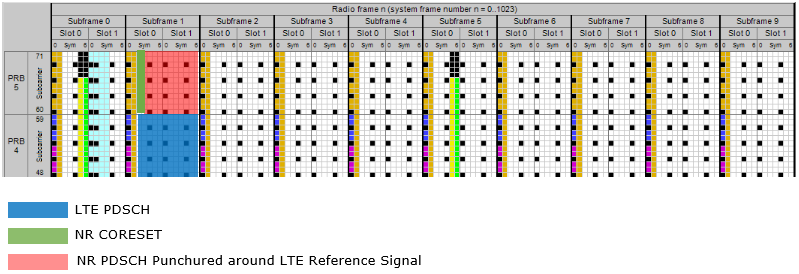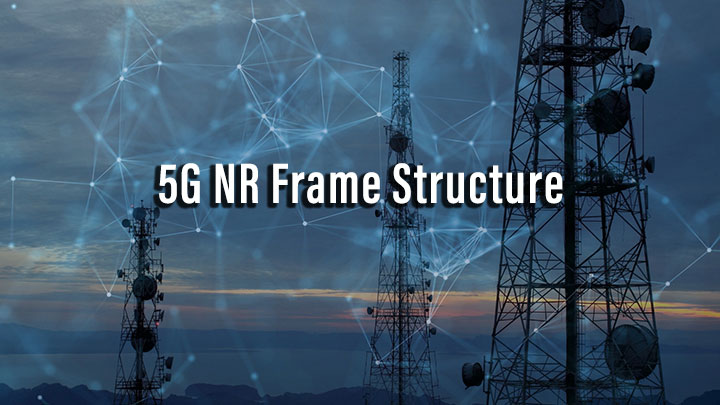Mini Slots In Nr
Based on the specifications in 38.912 sub-clause 8.2.1.2.1 & 8.2.2.1, I have put together below overview of DL & UL scheduling for URLLC (Ultra-Reliable and Low Latency Communications), In other words Non-Slot scheduling.
Jul 03, 2020 Cisco Webex® Room Kit Mini is an Artificial Intelligence (AI)-powered video conferencing system custom-designed for the huddle workstyle, and is easy to use, deploy, and manage. It combines codec, camera, microphones, and speakers into a single device that integrates with a 4K display to bring more intelligence and usability to all of your huddle rooms and spaces. NR Time domain slot, mini-slot and time interval: CATT: imported from 3GU: R1‑1611367: NR frame structure for multiplexing of URLLC and eMBB traffic: CATT: imported from 3GU: R1‑1611368: On-demand access for UE power saving in NR system design: CATT: imported from 3GU: R1‑1611369: NR Numerology Agnostic Synchronization Channel Design.
Desired objective in URLLC Design:
- Low latency targets in terms of one way User Plane latency below or equal to 0.5/1ms
Key enablers for achieving URLLC :
- Non-slot based scheduling (The mini-slot length of 2, 4 or 7 symbols is recommended by 3GPP specs).
- Reduced processing time at the UE – Highly adaptable LDPC codes.
- Single antenna port transmission (Transparent to the UE).
- Front loaded DMRS, DMRS is located in 1st symbol of the slot/mini-slot for early channel estimation & coherent demodulation.
DL URLLC scheduling

As per specifications in 38.912 there are two types of non slot (Mini-slot) based scheduling in DL.
- Pre-emptive DL URLLC scheduling
- Non Pre-emptive URLLC scheduling
Pre-emptive DL URLLC scheduling:
- In preemptive scheduling, eMBB traffic is scheduled on all the available radio resources with in the TTI,(1 ms).
- When URLLC data is scheduled to the corresponding UE, Part of the ongoing eMBB resources in the slot are overwritten (preempted) to schedule the URLLC data.
- The Preempted/punctured eMBB resources are communicated to the UE by Preemption/punctured Indication (PI) IE carried in the PDCCH DCI in the upcoming slot.
- The eMBB Resources received at the UE which are indicated by the PI are flushed (erased).
- Since NR has CBG (Code Block Group) based HARQ Re-Transmission, Only the code blocks groups (CBG's) that have the eMBB resources Preempted/punctured are re transmitted and soft combined to retrieve the actual eMBB TB.
Pro: On-going eMBB data can be preempted(Over Written) for immediate transmission of data requiring very low latency, meaning URLLC packets can be transmitted without waiting for ongoing scheduled transmissions to be completed.
Con:There could be performance degradation on eMMB traffic due to interruptions in scheduling and Multiple HARQ Re-Tx.
Non Pre-emptive URLCC scheduling:
- In Non-Preemptive URLLC scheduling on-going eMBB data is not interrupted.
- ULRCC resources are allocated in the upcoming TTI along with eMMB data that is queued up for scheduling in upcoming TTI .
Pro:Since ongoing eMBB data is not interrupted there will not be any performance degradation for ongoing transmissions.
Con:There could be a delay while gNB is waiting for completion of current eMMB scheduling and waiting to schedule URLLC data in upcoming TTI.
UL URLLC scheduling
- Grant Free UL Transmission enables reduce UL transmission delays and achieve URLLC Reliability targets.
UL Grant-Free Transmission (Ref: 38.321, 38.824 & 38.331)
- For ultra low latency and reliability requirements, it is required to support UL GF transmission with K repetitions (i.e. UL data transmission without scheduling request).
- Below is scheduling flow for dynamic UL scheduling targeting a C-RNTI, In this approach the delay is high due to the handshake procedure (i.e sending the scheduling Request (SR) and waiting for UL grant allocation).
- Grant free UL transmission will help over come these delay issues by pre scheduling UL grants targeting a CS-RNTI. (Similar to SPS scheduling in LTE).
- There are two types of UL GF configuration supported in 3GPP Rel-15.
- Grant free UL CS Type1 : In this type Grant free UL transmission is configured and activation/deactivation is done by RRC configuration, No L1 signaling is involved.
- Grant free UL CS Type2: In this type Grant free UL transmission is configured by RRC configuration but activation/deactivation is done by L1 signaling.
Grant free UL CS Type1:
- This type is similar to LTE semi-persistent scheduling (SPS).
- This type is suitable for deterministic URLLC traffic pattern.
- UL data transmission is configured & activated/deactivated by RRC configuration without any L1 signaling being involved.
- Higher reliability is achieved by 'K' repetitions in 'P' time.
- In Type1, RRC provides the UL grant to UE through higher layer parameter named as ConfiguredGrantConfig including the parameter rrc-ConfiguredUplinkGrant without the involvement of any L1 signaling.
Below are the configurations for Type1 Grant Free UL Transmission (Ref from 3GPP TS 38.331 version 15.4.0 Release 15)
- After configuring Type1 UL Grant for a Serving Cell by RRC, the MAC entity shall do following actions for scheduling UL grants there after for that particular CS-RNTI.
- MAC entities store's the details of the uplink grant provided by RRC Layer as a configured uplink grant for the indicated Serving Cell.
- MAC entity will initialize or re-initialize (similar to LTE SPS-Scheduling) the configured uplink grant to start in the symbol according to timeDomainOffset (SFN/Slot) and S(Symbol) (derived from SLIV ), and reoccurs with periodicity.
- In Type1 Grant Free UL transmission, MAC or L1 can not make any modifications to the grants for any traffic pattern changes, every time a grant need to be modified it has to come from Upper layer (RRC Reconfiguration).
Pros: Traditional Handshake delay is removed as UE does not need to send a service request and wait for UL Grants.
Cons: Since this type do not have any L1 signaling there are challenges in addressing fast modifications to SPS scheduling(in terms of resources), meaning every time when there is a modification required in the SPS scheduling it has to be done via RRC Reconfiguration, This could add few extra ticks to the latency.
Below flow is an over view of Type 1 GF UL Transmission



Grant free UL CS Type2:
- This type is suitable for frequently changing URLLC traffic pattern.
- UL data transmission is configured by RRC configuration but activation/deactivation is done by L1 signaling.
- Higher reliability is achieved by 'K' repetitions in 'P' time.
- In Type2, RRC configures the UL grant to UE through higher layer parameter named as ConfiguredGrantConfig, However activation/deactivation of UL grant is done by L1 signaling.
Below Common ConfiguredGrant information for Type1 & Type2 is sent by RRC
- When the UE receives the above common parameters configured in ConfiguredGrantConfig , it will not immediately perform uplink transmission,
- UL Transmission will start only after the UE receives the activate indication in the DCI scrambled by the CS-RNTI,
- DCI will carry the UL Grant information i.e time-domain resources, frequency-domain resources, modulation and coding scheme (IMCS) and other related parameters,
- Based on the provided grants in the DCI UE will perform type 2 Grant free transmission.
Mini Slots In Nr 7

Pros: L1 signaling can enable fast modification of Allocated resources(UL Grant). This will provide flexibility for Grant Free UL transmission based on the URLLC traffic patterns.
Cons: In type 2 an additional L1 signaling is introduced which could slightly impact latency.
Below is a over view of Type 2 GF UL Transmission
HARQ-ACK feedback mechanism for URLL
- In Rel-15 NR, A Timer-based HARQ-ACK feedback mechanism is introduced for UL GF transmission, This pre defined timer is configured via RRC Configuration.
- Where a UE shall assume ACK when the pre-defined Timer expires.
- Before the timer expires if an uplink grant is assigned for the same TB initially transmitted will indicate NACK for the Grant free uplink transmission waiting for a response and it will perform Re-Tx (NACK Signature for UE: Same HARQ ID with NDI (new Data Indicator) bit not toggled).
- This kind of implicit HARQ-ACK feedback mechanism will help reduce signaling overhead, But due to stringent reliability and latency targets in Rel16 it is agreed to have Explicit HARQ-ACK feedback mechanism.
Mini Slots In Nr 1
Refer to TDOC: R1-1901562 for more details on HARQ-ACK feedback mechanism for URLLC